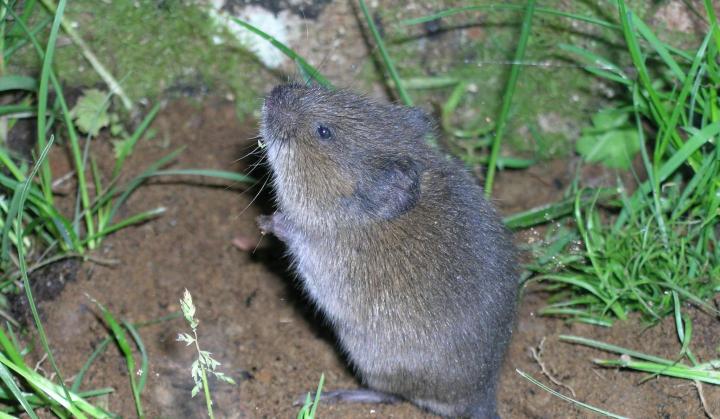Vole Yard Damage Solutions: Effective Control Techniques
Vole Yard Damage Solutions: Effective Control Techniques
Blog Article
Grasping Vole Insect Control: Thorough Insights on Problem Avoidance and Therapy Methods
By acknowledging the subtle indications of vole infestation early on, we can take aggressive procedures to prevent prevalent damage. In this conversation, we will discover the nuances of vole actions, dig into the recognition of infestation signs, and uncover the most reliable avoidance and therapy methods.
Comprehending Vole Behavior
Examining the foraging patterns of voles uses beneficial insights right into their actions and environment choices. By observing their foraging actions, researchers can acquire a far better understanding of where voles prefer to develop their environments and the extent of their ecological impact.
Study suggests that voles show careful feeding behaviors, preferring bulbs, origins, and seeds. This nutritional choice affects their foraging patterns, leading them to locations abundant in plants and ground cover. In addition, voles are recognized to develop elaborate tunnel systems for foraging and nesting purposes, indicating a high level of versatility to their surroundings.
Understanding vole actions is crucial for carrying out targeted bug control procedures that disrupt their habitat choices and foraging tasks (vole lawn damage). By studying their behavior, specialists can create much more effective prevention and therapy methods to manage vole problems

Identifying Indications of Vole Infestation
Vole infestations can be found by acknowledging specific signs of their presence in a location. One of one of the most typical indicators of a vole invasion is the presence of surface area runways. Voles produce networks of narrow pathways on the ground that are generally about two inches broad. These paths are typically found in grassy locations or underneath compost or ground cover where voles can move openly and browse for food.
One more key sign of vole problem is the presence of little burrow openings in the ground. Voles dig superficial burrow systems with multiple entryways and leaves. These burrows function as shelter and nesting websites for the voles. In addition, voles are known to leave eaten plant stems, origins, and bulbs near their burrow openings, suggesting their feeding task in the location.
In addition, vole droppings can also represent their existence. Vole droppings are tiny, brownish, and round in shape, looking like grains of rice. Discovering these droppings along paths or near burrow openings can validate a vole problem. By being watchful for these indications, property owners can promptly deal with vole invasions and stop additional damages.
Applying Proactive Avoidance Actions

Additionally, using natural vole deterrents like castor oil-based repellents vole control utah or killer urine can function as effective safety nets. It is also a good idea to routinely evaluate outside spaces for any type of signs of vole activity, such as paths or burrow openings, to address prospective problems quickly. vole control. By embracing these aggressive prevention methods, homeowner can dramatically minimize the likelihood of vole damages and maintain the health and wellness and looks of their landscapes
Reliable Treatment Approaches
Integrating targeted trapping approaches and using accepted rodenticides are necessary elements of reliable treatment approaches for handling vole infestations. Routine monitoring and upkeep are also crucial aspects of successful therapy techniques to make certain that vole populations are maintained under control. By combining capturing, rodenticides, environment adjustment, and regular monitoring, efficient vole pest control can be accomplished.
Surveillance and Maintenance Tips
Preserving a systematic routine for surveillance and conducting regular upkeep activities is important to maintain the effectiveness of vole bug control actions. Regular tracking permits the early detection of vole activity, making it possible for prompt intervention before problems worsen. To efficiently keep an eye on vole populaces, strategically placed traps can be used in vole paths or near burrow entries. By on a regular basis examining these catches, homeowner can gauge the extent of vole activity and change control methods as necessary.
Additionally, maintaining a tidy and clean landscape is crucial in vole avoidance. Clearing up away particles, such as heaps of timber or dense vegetation, removes potential vole habitats. Routinely cutting lawns and trimming plant life helps in reducing vole hiding areas and reduces their access to food sources.
Additionally, continuous maintenance of physical barriers, such as fences or wire mesh, is vital to stop vole breach. Checking and fixing any type of damages to these structures ensures that vole control remains effective in safeguarding residential or commercial properties from infestations. By integrating these monitoring and maintenance methods into an extensive vole insect control plan, individuals can properly handle vole populations and shield their residential properties from damage.
Conclusion
To conclude, understanding vole insect control requires a strong understanding of vole actions, the capability to determine signs of problem, carrying out proactive avoidance procedures, efficient treatment approaches, and constant monitoring and maintenance. By taking an extensive approach to vole control, individuals can successfully handle and protect against invasions, inevitably protecting their property and bordering environment from damages caused by these tiny rodents.
In this conversation, we will discover the subtleties of vole habits, dive into the recognition of problem signs, and reveal the most reliable prevention and treatment techniques.Including targeted trapping techniques and using accepted rodenticides are important parts of effective treatment techniques for taking care of vole problems. To effectively keep track of vole populaces, purposefully placed traps can be utilized in vole runways or near burrow entryways. Checking and fixing any kind of problems to these frameworks ensures that vole control remains efficient in guarding residential or commercial properties from invasions. By integrating these tracking and upkeep methods into a detailed vole bug control plan, individuals can efficiently manage vole populations and protect their homes from damage.
Report this page